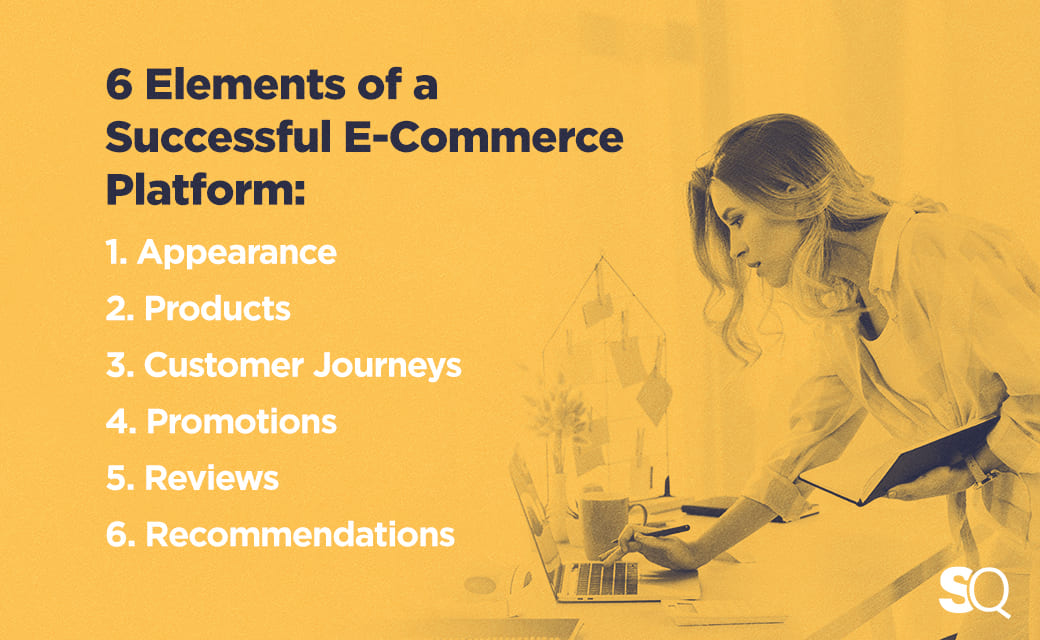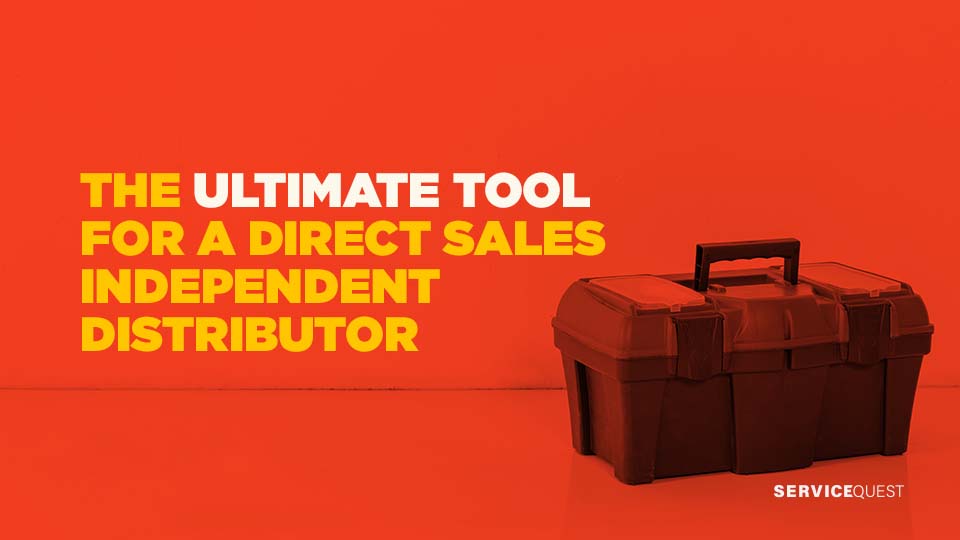How to drive engagement through a customer-centric online sales experience
Is an E-commerce platform for direct sales possible?
The direct sales model has traditionally differentiated itself from other sales channels with personalized attention. The distributor model allows direct sales companies to customize the shopper experience for prospects and customers.
Very few brick and mortar— with the exception of Nordstroms, etc.—provide similar curated shopping experience. Further, almost no online retailers have created that level of personalization. But online retailers haven’t been sitting still and they are slowly beginning to offer these capabilities with either human curators (curated.com) or AI (amazon recommendations).
With over 63% of shopping experiences happening online and the pandemic’s impact on true face to face interactions, direct sales companies can no longer ignore their retail shopping experiences.
To succeed, direct selling companies need to take inventory of their retail e-commerce site and update it to create an engaging and customer-centric experience.
Direct Selling organizations must be careful to not disenfranchise their distributors who operate as brand ambassadors, which is something traditional e-commerce sites and brick and mortar sites have been unable to duplicate.
Read more about the Building the Best MLM Compensation Plans for distributors here.
With over 20 years of experience, we have identified six elements which exist in successful e-commerce platforms. Adopting these elements in your e-commerce offering will allow you to grow your sales.

6 Elements of a Successful E-Commerce Platform
#1 Appearance
Your website is often your customers first impression of your business and opportunity. Just like you dress for success, your site must “dress” for your target customer.
The goal is to create an engaging experience which keeps the customer on your website. In other words, the longer a customer spends on your website the greater the opportunity for them to transition from browsing to purchasing. Therefore, there are four areas to review and consider revisions: visual design, mobile optimization, facetted search and video engagement.
Visual Design
Website visual design trends are like changes in fashion. That is to say, yesterday’s bell bottoms are today’s skinny jeans. Review your website for the latest best practices. For example, today this means a layout that includes ample white space, large graphics, and clear calls to actions
Mobile Optimization
When it comes to online shopping, almost 50% of all e-commerce shopping happens through mobile devices. As a result, your site should be designed, optimized and tested to make sure that the mobile experience is optimal.
Review your site on a mobile device and consider the following:
- For each page, where is your primary call to action located? Best practices call for it to be near the top of the page. Placement at or near the top will reduce the risk of e-commerce abandonment. Requiring the shopper to scroll through pages of content to find the call to action will most likely cause frustration which results in a lost opportunity.
- Your mobile experience should account for smaller screen real estate. Are text and pictures sized properly? Will a user have to expand the screen to see the product and read the descriptions? How hard are you making your customer work?
Video Engagement
Video engagement has never been easier to achieve.
With the volume of content being generated and consumed on social platforms like Instagram, Facebook, TikTok, YouTube, your site needs to leverage video to engage customers.
But where to start? Convert your previously shared written content into video clips. Today, we are all carrying a camera that is perfect to capture a video message, throw in a tripod phone holder, a ring light and call yourself a professional. Remember to keep it short.
Not sure you feel comfortable being the pitch person?
The good news is, you don’t have too. There are lots of sites available where you can contract with individuals who have the skills. Leveraging sites like Fiverr.com as your contract marketing organization.
Facetted Search
One of the many benefits of shopping online is avoiding the hassle of wandering around a store. Your website shouldn’t force them to search for the proverbial needle in a haystack.
Your e-commerce site needs to move beyond basic category and subcategory structures and incorporate the advanced search functionality shoppers have come to expect.
Facetted search provides customers with the ability to filter by price, size, color, customer rating, or product type options. Your role is to empower them, save them time, and bring them one step closer to “add to cart.”
#2 Products
Product Description pages—or PDP—perform a critical function in modern retail e-commerce sites. How you display and describe your products has a direct correlation with whether the customers will add your product in their shopping cart. Engage your customer with a compelling story and detailed views of your product.
Product Description
Your product descriptions should do three things:
- Communicate your unique value proposition
- Help your customer understand the problem the product solves
- Invite customers into the story
Important tip: customers don’t want to read a long narrative. Embed audio and video clips to illustrate how you solve their problem.
Product Images
Customers today want more than just an image of the product, they have experienced the ability to zoom and rotate the product. Today, product images must communicate how the customer would use or interact with the product.
Create an opportunity for interaction via high-quality images and many views.
#3 Customer Journeys
One of the most overlooked areas in online shopping is the various journeys a customer performs while interacting with your store front.
Direct selling organizations typically require additional steps or information (who is my distributor, customer/distributor registration, checkout journeys) so it’s critical to simplify and streamline those journeys.
A slow, clunky, and over-complicated journey is a sure-fire way to lose a sale. The longer you stand in line in a retail store, the more time you have to second-guess your purchases. The same is true for online shopping. The more hoops your customer has to jump through, the more likely they are to abandon their shopping cart.
Over 70% of all shopping carts are abandoned. Mobile shopping increases the abandoned cart percentage to over 85%. In 2019, this resulted in lost sales of $18 billion.
Review each journey a customer can undertake and simplify the steps. Journeys to review include
Customer Registration
- Minimize the amount of information required to create an account. Split when the information is captured so as not to overwhelm the prospective customer.
Checkout
- Simplify the checkout process by reducing the number of steps/clicks a prospective shopper must go through to complete the checkout. Default to the most common used options/selections.
#4 E-commerce Platform Promotions
Promotions are one of the easiest ways to engage customers but only if it happens organically through the shopping experience. Older or more simple solutions rely on discount codes or coupons which means shoppers need to know the codes or have to rely on the distributor or CSR to use the promotion.
Modern e-commerce platforms enable shoppers to enjoy discounts without relying on others by analyzing the shopping cart in real time and presenting promotions the shopper has earned or presenting promotions that the shopper is “close” to earning.
Loyalty programs which reward the returning shopper create the opportunity for stickiness. Develop programs which offer discounts or loyalty points based on specific buying behaviors. Customer acquisition is hard, so keeping customers is critical to every business success.
Some of the best ways to increase customer engagement are through discounts, consider:
- Offer a one-time discount to first-time visitors when they provide their email. Bonus: you can continue the conversation through email!
- Highlight the discounted price for loyalty rewards or recurring order programs. Include a button to opt-in for these discounts at any time.
- Buy X, get Y free promotion rewards customers who stock up.
#5 Reviews
As Chris Anderson, businessman and current head of TED, puts it, “Your brand isn’t what you say it is — it’s what Google says it is.”
Customers believe what other people say over what you say. They are also more likely to buy when they can see reviews.
Product pages with customer reviews experience 3.5x more conversions than those without reviews. Amazon product reviews are one of the first places shoppers go when considering purchasing a product that they are unfamiliar with. Reading others experiences with a product provides insights and if the reviews are positive, confidence, which leads to purchases. Ultimately, the goal is for the customers to have trust in your products and the information you share.
Another way to build trust? Handle negative reviews with grace, transparency, and care. New customers are looking to see how you respond to negative reviews.
#6 Recommendations
One of the distinct advantages that direct selling organizations have over pure play e-commerce retailers is the distributor who can build a rapport with the shopper and provide a personalized shopping experience. While the technology isn’t there yet, there are options available to close the gap in a pure e-commerce selling opportunity.
Amazon has set the bar, with the ability to cross sell, up-sell and suggest alternative products. To be competitive, your e-commerce experience should provide the same styles of functionality.
Some other suggestive selling practices to consider:
- Put the empty shopping cart to use with a compelling call to action. When your customer clicks on or hovers over the cart icon, prompt them to add an item. Don’t allow them to see a blank page.
- Offer free samples before checkout. Customers love freebies and the chance to “try before they buy.” Plus, when they love the sample, you can nurture them through email to buy the full product.
- Promote your loyalty club to new customers. Don’t miss the opportunity to invite new customers into a closer relationship.
Trapped by Inflexible Software or E-commerce Platform? We Can Help.
Does your software platform facilitate a great e-commerce experience?
At Thatcher, we understand the technical complexities required for your unique value proposition. That’s why we’ve built a robust, modular platform called Prowess.
Prowess includes a robust e-commerce platform with the functionality to support customers throughout their shopping journey. Prowess modular platform can handle the most complex direct selling compensation or career plans and includes flexible reporting, analytics, and tools for global expansion, without heavy reliance on IT.
Don’t let limited software limit your growth and success. Speak with us today so we can show you how a module-based, direct sales software will work for you!




